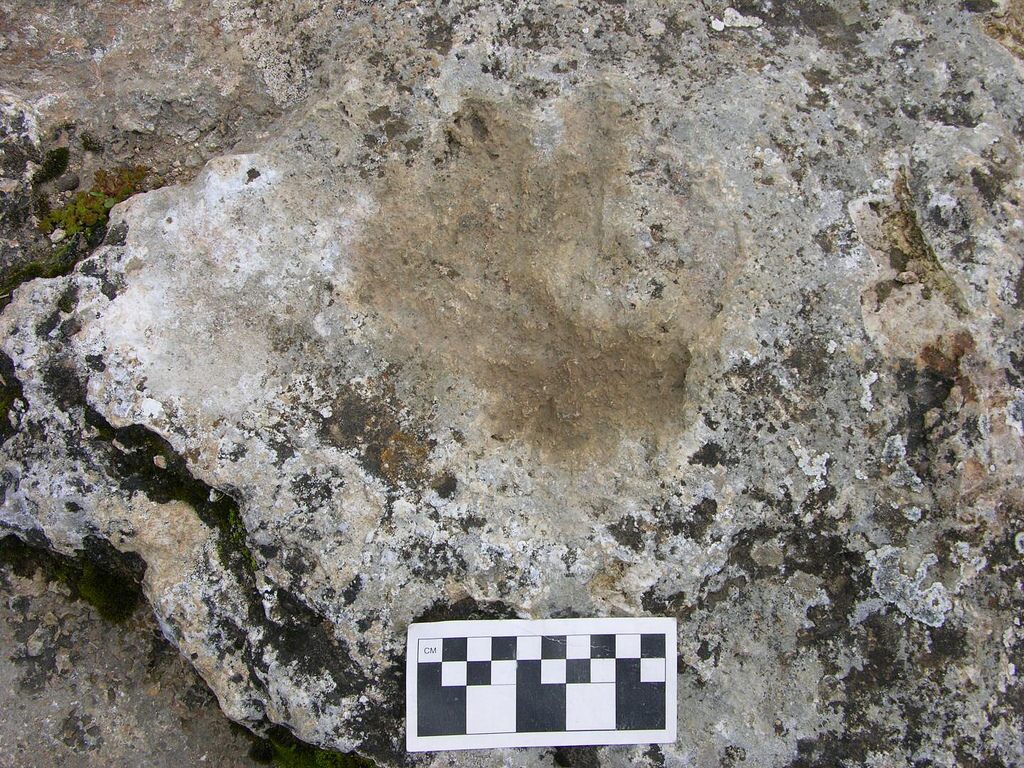
AMERICAN ASSOCIATION FOR THE ADVANCEMENT OF SCIENCE—A new analysis of an archeological site in the high mountains of Tibet suggests that permanent residents may have set up camp thousands of years sooner than previously thought. Previous analyses estimated that the site’s founding residents arrived about 5,200 thousand years ago, but now a more comprehensive analysis by Michael Meyer et al. suggests that it was inhabited, likely on a permanent basis, at least 7,400 thousand years ago, but perhaps as long as more than 12,000 years ago. Upon leaving Africa, humans effectively spread out across most of the Earth, but the timing of their arrival in the highest Himalyan ranges has been unclear. Among some of the best preserved sites for scientists to study is Chusang, a village perched in the central plateau more than 4,000 meters above sea level. The site, discovered in 1998, features 19 human hand and footprints along the surface of a fossil travertine. In attempts to better date the village, Meyer and colleagues used three different techniques, including thorium/uranium dating of samples taken from and adjacent to the prints; optically stimulated luminescence (OSL) to determine the date of quartz crystals in the travertine; and radiocarbon dating on microscopic plant remains at the site. Their new estimated range for settlement at Chusang, between 7,400 and 12,670 years ago, is more in line with results from some genetic studies, the authors note. As well, they highlight how difficult travel from this base camp must have been, with roundtrip routes to other sites likely taking dozens of days and being impassable for most of the year. Therefore, they emphasize that is it very likely that Chusang represents a permanent settlement, before agriculture took hold in the area. Permanent pre-agricultural peopling of the plateau may have been enabled by a wetter climate that prevailed in the region at the time, Meyer and colleagues suggest.
_________________________________________________
A handprint image taken in 2006. This material relates to a paper that appeared in the Jan. 6, 2017, issue of Science, published by AAAS. The paper, by M.C. Meyer at University of Innsbruck in Innsbruck, Austria, and colleagues was titled, “Permanent human occupation of the central Tibetan Plateau in the early Holocene.” Credit: Mark Aldenderfer
_____________________________________
Article Source: AAAS press release
_________________________________________________
“Permanent human occupation of the central Tibetan Plateau in the early Holocene,” by M.C. Meyer; Z. Wang at University of Innsbruck in Innsbruck, Austria; M.S. Aldenderfer at University of California, Merced in Merced, CA; D.L. Hoffmann at Max Planck Institute for Evolutionary Anthropology in Leipzig, Germany; J.A. Dahl at National Isotope Centre at GNS Science in Lower Hutt, New Zealand; D. Degering at ADD Ideas Degering and Degering in Mohorn, Germany; W.R. Haas at University of Wyoming in Laramie, WY; F. Schlütz at Lower Saxony Institute for Historical Coastal Research in Wilhelmshaven, Germany.
_________________________________________________
Did this article interest you? If so, you may be interested in Popular Archaeology’s premium article about ancient Tibet, On the Roof of the World: Discovering the Forgotten Civilization of Zhang Zhung.
_________________________________________________
Subscribe to Popular Archaeology Premium. Available on all laptops and mobile devices, and still the industry’s best value at only $9.00 annually.
___________________________________________
Travel and learn with Far Horizons.
____________________________________________
This richly illustrated issue includes the following stories: Recent findings shedding new light on the whereabouts of the remains of Philip of Macedon, father of Alexander the Great; how an archaeologist-sculptor is bringing bones of the dead back to life; archaeologists uncovering town life at the dawn of civilization; an exclusive interview with internationally acclaimed archaeologist James M. Adovasio about what makes the Meadowcroft Rockshelter prominent in the ongoing search for the first Americans; what archaeologists are finding at the site of the ancient city of Gath, the home town of the biblical Philistine giant, Goliath; and how scientists are redrawing the picture of human evolution in Europe. Find it on Amazon.com.







